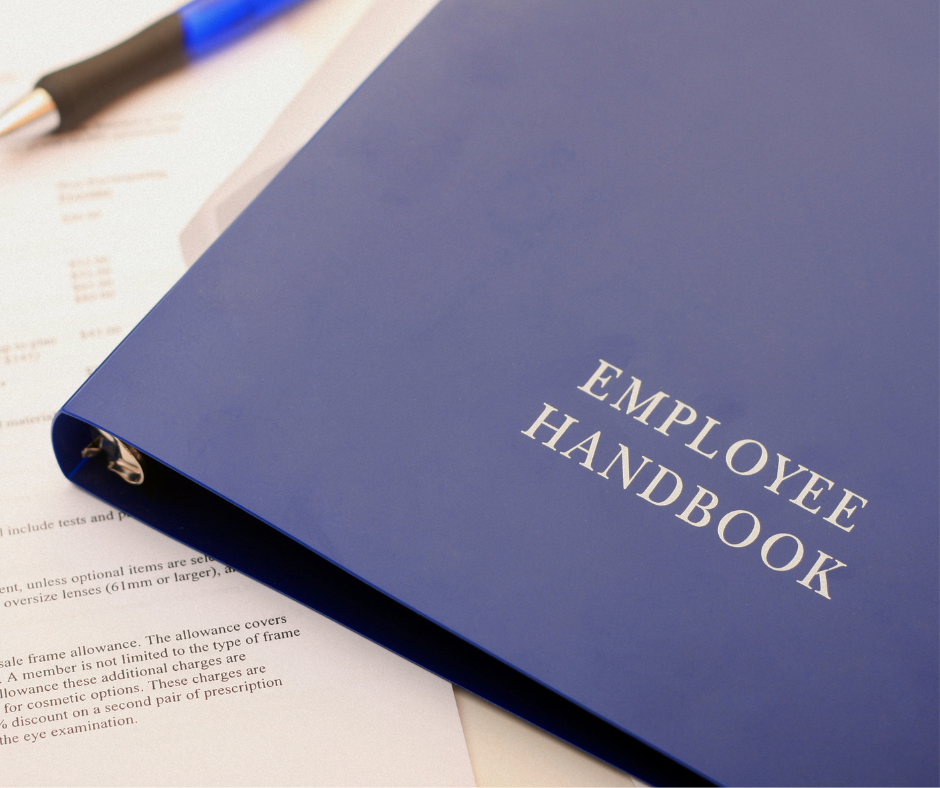
In today’s globalized economy, employing foreign nationals is becoming increasingly common. As an employer, you play a crucial role in helping these talented individuals navigate the complexities of US immigration policy and procedures. A well-crafted visa employee handbook example is indispensable in guiding your organization through the sponsorship process while ensuring compliance with federal immigration laws. By understanding different visa categories, streamlining the sponsorship process, and providing a supportive workplace environment, you’ll enable foreign national employees to thrive and contribute to the success of your organization.
Key Takeaways
- Develop a comprehensive and customized visa employee handbook to ensure compliance with immigration laws.
- Understand different visa categories, requirements, and sponsorship process for temporary work visas (H-1B, L-1 & TN) or permanent residence options (Green Card).
- Monitor policy updates and provide resources/guidance to foreign national employees in order to respond effectively to challenges.
Fortune 500 Companies Employee Handbook
Welcome to the official Fortune 500 Companies Employee Handbook, a comprehensive guide designed to provide you with essential information about our organization’s policies and procedures. In this handbook, you will find valuable insights into the expectations and standards that define our workplace culture. As a member of our team, it is crucial to familiarize yourself with the Fortune 500 Companies Employee Handbook to ensure a smooth integration into our dynamic and thriving environment. From code of conduct to benefits, this handbook serves as a key resource for your professional journey with us. We encourage you to explore its contents thoroughly and refer to it whenever you have questions or need guidance on navigating the various facets of your employment.
Developing a Comprehensive Visa Employee Handbook
Drafting an effective visa employee handbook is a significant step towards managing your foreign national workforce. A comprehensive and customized policy will address various visa categories, requirements, and compliance with federal immigration laws. A well-defined immigration policy can assist employers in averting discrimination claims under the Immigration and Nationality Act (INA) and simplify the hiring and sponsorship process for both employers and foreign national employees, including those applying for an immigrant visa.

Key Components of a Visa Employee Handbook
A well-crafted visa employee handbook should include key components such as:
- Visa categories
- Sponsorship guidelines
- Compliance requirements
- Support for foreign national employees
Including visa categories, like nonimmigrant visa options, is essential to guarantee adherence to immigration regulations and ensure transparency.
Effectively communicating sponsorship guidelines in the handbook requires the inclusion of a dedicated section outlining the guidelines and expectations, providing comprehensive information on the process, eligibility criteria, and responsibilities of both the employee and the company.
Compliance requirements, such as visa requirements, work eligibility verification, and compliance obligations, should be reviewed and incorporated to maintain adherence to relevant laws, regulations, and requirements.
Customizing Your Visa Employee Handbook
It’s necessary to tailor your visa employee handbook to meet your organization’s unique needs, industry-specific requirements, and workforce makeup. Key considerations for customization include:
- Regularly reviewing the handbook
- Ensuring policies accurately reflect real-life situations
- Demonstrating compliance with immigration laws and visa sponsorship requirements
- Considering work eligibility verification and documentation requirements for foreign-born workers
- Consulting appropriate legal counsel.
In the tech sector, for example, visa employee handbooks should include clear policies on visa sponsorship, compliance with immigration laws, support for international employees, and training and education on immigration matters. The composition of your workforce can influence the content of your visa employee handbook. For instance, if your company has employees from various countries, the handbook may include specific information on visa sponsorship, work authorization, and immigration processes, as well as addressing cultural sensitivity and inclusion to ensure a welcoming and inclusive atmosphere for all employees.
Understanding Different Visa Categories and Requirements

For employers, understanding the different visa categories and their requirements is key to offering effective support to foreign national employees. This includes being familiar with temporary work visas, such as H-1B, L-1, and TN, as well as permanent residence options like Green Cards.
Keeping updated on various visa categories is important for employers when contemplating the hiring of foreign national employees. It also helps them understand the relevant immigration regulations to ensure compliance.
Temporary Work Visas (H-1B, L-1, TN)
Temporary work visas like H-1B, L-1, and TN permit foreign nationals to work in the US for a limited time. Employers need to understand the complexities of the sponsorship process to provide effective support to their foreign national employees throughout their employment tenure. The H-1B visa, for example, has a maximum duration of up to six years, and the sponsoring department is responsible for covering the expenses associated with the visa petition, such as attorney and filing fees.
To guarantee that the wage offered to the foreign national meets the prevailing or actual wage criteria, employers must be aware of the mandated wage rate for H-1B visas. The employer must file the necessary paperwork for a temporary work visa. This includes evidence of the employee’s qualifications and job offer.
Permanent Residence Options (Green Card)
Permanent residence options, such as Green Cards, allow foreign nationals to live and work in the US without time restrictions. As an employer, grasping the sponsorship process and eligibility criteria for permanent residence options is significant. To be eligible for a Permanent Workers Visa (Green Card), which grants lawful permanent residency, one must satisfy certain criteria, such as:
- Having extraordinary ability in the sciences, arts, education, business, or athletics
- Being an outstanding professor or researcher
- Being a skilled worker in a priority occupation, among others.
The process for sponsoring a Green Card involves assessing the employee’s eligibility, covering the associated expenses, and gathering the necessary information and documentation. For family-based Green Card applications, it is important to note that the government filing fees may vary depending on the applicant’s location, and additional fees such as biometric services and USCIS Immigrant Fees may be applicable.
Ensuring Compliance with Federal Immigration Laws

Maintaining compliance with federal immigration laws is important for employers to prevent possible penalties and assure fair treatment of their foreign national employees. This involves proper employment eligibility verification through Form I-9 and, if needed, E-Verify, as well as adhering to anti-discrimination regulations.
By following these guidelines, employers can maintain a legally compliant workplace and protect their employees from potential discrimination.
Employment Eligibility Verification (Form I-9 and E-Verify)
Employers must complete Form I-9 for every new employee, regardless of their citizenship status, to verify their identity and employment authorization within the United States. The Form I-9 must be completed by both employers and employees, with employers responsible for selecting the appropriate document types provided by the employee and retaining the form.
In addition to Form I-9, employers may opt to use E-Verify, an internet-based system that compares the information from an employee’s Form I-9 with records held by the Social Security Administration (SSA) and the Department of Homeland Security (DHS), to confirm the employment eligibility of newly hired employees. Failure to adhere to Form I-9 procedures can lead to monetary fines, potential imprisonment, and civil and criminal penalties, making it essential for employers to ensure compliance with Form I-9 requirements.
Micron Technology Employee Handbook Example
Within the realm of Micron Technology, the employee handbook serves as a comprehensive guide, encapsulating the values, policies, and expectations that shape our workplace culture. This Micron Technology employee handbook example is designed to provide clarity and support, offering a roadmap for both new and seasoned employees. Delving into this handbook exemplifies Micron’s commitment to fostering a positive and inclusive work environment. From conduct standards to benefits information, the Micron Technology employee handbook example is a vital resource, ensuring that every team member understands their role in contributing to our collective success.
Navigating Anti-Discrimination Regulations
Navigating anti-discrimination regulations is an essential aspect of creating a legally compliant workplace. Employers must comply with the following laws:
- The Immigration and Nationality Act (INA), which prohibits discrimination based on national origin, citizenship status, unfair immigration-related employment practices, and discrimination against protected individuals.
- Title VII of the Civil Rights Act of 1964, which prohibits discrimination based on race, color, religion, sex, and national origin.
- The Americans with Disabilities Act (ADA), which prohibits discrimination against individuals with disabilities.
- The Age Discrimination in Employment Act (ADEA), which prohibits discrimination against individuals who are 40 years of age or older.
Employers must adhere to federal law to ensure a fair and inclusive workplace.
By understanding and adhering to these anti-discrimination regulations, employers can avoid penalties and ensure fair treatment of foreign national employees in the workplace.
Streamlining the Visa Sponsorship Process

Optimizing the visa sponsorship process is important for employers to assist foreign national employees and minimize organizational disruptions. This involves effective hiring and interviewing of foreign nationals, as well as managing visa application timelines and costs.
By adopting best practices and taking a proactive approach to sponsorship, employers can create a smooth experience for both their organization and foreign national employees.
Hiring and Interviewing Foreign Nationals
Developing clear guidelines for hiring foreign nationals and interviewing them can ensure that the process is efficient and compliant with immigration laws. Employers should:
- Establish non-discriminatory employment policies
- Familiarize themselves with hiring options
- Obtain certification through the U.S. Department of Labor
- Consult with an immigration attorney on changes to work status
- Conduct Form I-9 audits and adhere to E-Verify requirements.
By understanding the visa sponsorship process, employers can effectively support their foreign national employees through immigration sponsorship, from the initial job offer to the final approval of the visa.
Managing Visa Application Timelines and Costs
Managing visa application timelines and costs is essential for employers to support foreign national employees and minimize disruptions to the organization. To effectively manage visa application timelines, employers can:
- Apply early
- Submit comprehensive applications
- Utilize premium processing if available
- Engage an immigration attorney
- Plan ahead
Employers should also be mindful of the costs associated with visa applications, such as government filing fees, attorney fees, and other expenses, and allocate resources accordingly to facilitate a smooth application process.
Supporting Foreign National Employees in the Workplace

Creating a supportive workplace environment for foreign national employees is key to their success and satisfaction. This involves effective integration and onboarding, as well as focusing on retention and career growth.
By understanding the unique needs of foreign national employees and offering resources and support, employers can create a welcoming and inclusive atmosphere where all employees can thrive.
Integration and Onboarding
Employers should provide a supportive environment for foreign national employees during the integration and onboarding process, ensuring they feel welcomed and valued. This can be achieved by:
- Respecting and recognizing their culture
- Establishing clear objectives and expectations
- Cultivating a hospitable and inclusive work atmosphere
- Inviting feedback and suggestions
- Offering an extensive onboarding and integration program
Additionally, employers should consider cultural sensitivity practices, such as:
- Providing orientation to the host country’s culture and customs
- Conducting cultural training to understand effective management and communication styles
- Delivering sensitivity training and cultural orientation sessions for employees and their families
- Tailoring the onboarding process to respect and celebrate cultural differences.
Retention and Career Growth
Retention and career growth for foreign national employees can be achieved through:
- Professional development and training opportunities, such as training programs, online learning resources, and conferences
- Recognition and rewards for achievements, showing appreciation for foreign national employees
- Providing a supportive and inclusive work environment that encourages loyalty and commitment to the organization
By focusing on the professional growth and development of foreign national employees, employers can achieve the following benefits:
- Increased job satisfaction
- Improved employee commitment
- Enhanced task performance
- Higher retention rates
Adapting to Immigration Policy Changes and Challenges

In a constantly changing global environment, adjusting to immigration policy changes and challenges is important for employers to stay compliant and support their foreign national employees. This requires employers to:
- Monitor immigration policy updates
- Respond effectively to immigration-related challenges
- Equip themselves to navigate the complexities of immigration policy
- Ensure a stable and supportive environment for their foreign national workforce.
Monitoring Immigration Policy Updates
Employers must stay informed on immigration policy changes to ensure compliance and protect employees, adopting a proactive approach to mitigate risks. Recommended resources to monitor US immigration policy updates include:
- USCIS News Releases
- AILA Recent Postings
- AILA Immigration News
- USCIS Policy Manual Updates
- Migration Policy Institute Immigration Data Matters
- Office of Immigration Statistics
- Migration Policy Institute Data Hub
- EOIR Self-Help Materials
By staying abreast of immigration policy changes, employers can adapt their procedures and policies accordingly, ensuring a seamless transition for their employees and minimizing any potential risks.
Responding to Immigration-Related Challenges
Responding to immigration-related challenges, such as visa processing delays and work authorization changes, involves:
- Providing resources and a supportive environment to help foreign national employees navigate these issues through citizenship and immigration services, as well as other immigration services
- Furnishing information concerning the changes
- Providing support and guidance
- Advocating for comprehensive immigration reform
Employers should provide resources and a supportive environment when employing foreign workers, assisting foreign national employees in addressing immigration-related challenges faced by foreign workers.
By remaining informed of changes to immigration policies and consulting with immigration experts, employers can ensure compliance and effectively respond to any immigration-related challenges that may arise.
Southern Employee Handbook Example
In the Southern employee handbook example, employees gain valuable insights into the company’s policies and procedures. The Southern employee handbook example serves as a comprehensive guide, outlining the expectations and standards that employees are expected to adhere to. This handbook covers a wide range of topics, from workplace conduct to benefits and beyond. Employees can refer to the Southern employee handbook example for clarity on their rights, responsibilities, and the overall culture fostered within the organization. This document is a vital resource for both new hires and existing employees, fostering a unified and informed workforce within the Southern company.
Summary
In conclusion, crafting a powerful visa employee handbook and providing a supportive environment for foreign national employees is essential for the success of your organization. By understanding different visa categories, streamlining the sponsorship process, ensuring compliance with federal immigration laws, and adapting to immigration policy changes, employers can create a welcoming and inclusive workplace where foreign national employees can thrive. By following these best practices, employers can not only ensure compliance with immigration laws but also foster a strong and diverse workforce that contributes to the success of their organization.
Frequently Asked Questions
How does Visa train their employees?
Visa offers an apprenticeship track and a military track to equip its employees with the appropriate knowledge and skills for the future. Through Visa University, the company has physical campuses in California and Singapore as well as a global digital campus that provide on-the-job training and introductory cybersecurity courses.
What is the ESPP plan for Visa?
The Visa Employee Stock Purchase Program (ESPP) enables employees to invest in company stock at a discounted rate, with a contribution of up to 10% of their base salary. This benefit allows them to save for retirement and take advantage of potentially rewarding stock investments.
What are the Visa leadership principles lead by example?
At Visa, we lead by example and strive to act with integrity and honesty in all our dealings. We demonstrate our commitment to these values by setting an example for our teams to follow and speaking up when concerns arise. We also comply with our Code, company policies, and all laws and regulations.
What are the ethics of Visa?
Visa’s ethical standards are driven by their Code of Business Conduct and Ethics and their core values, such as integrity, people, innovation, clients, collaboration, and excellence. This Code outlines the way they approach their work and one another.
What are the key components of a visa employee handbook?
A visa employee handbook should include visa categories, sponsorship guidelines, compliance requirements and support for foreign national employees to ensure compliance with visa regulations.
Important Disclaimer:
The article presented here does not serve as a representation of the company’s actual employee handbook mentioned in this article.
Our discussions and insights regarding employee handbook are based on assumptions about what may be considered significant in this companies’ policies. These assumptions are drawn from available information and industry knowledge. Readers are advised that the content provided is for informational purposes only and should not be construed as an exact reflection of any company’s official policies or procedures. For precise and accurate details regarding a company’s employee handbook, individuals should refer directly to the company’s official documentation or consult with appropriate representatives.
Please be aware that the content on this page has been generated by using artificial intelligence language models and may contain errors, inconsistencies, or outdated information. It is provided as-is without any warranties or guarantees of accuracy. We strongly recommend using this content as a starting point for further research. We disclaim any liability for damages or losses resulting from the use or reliance on this content.